Reactive masterpiece S.V. Ilyushin. Part II. In the ranks
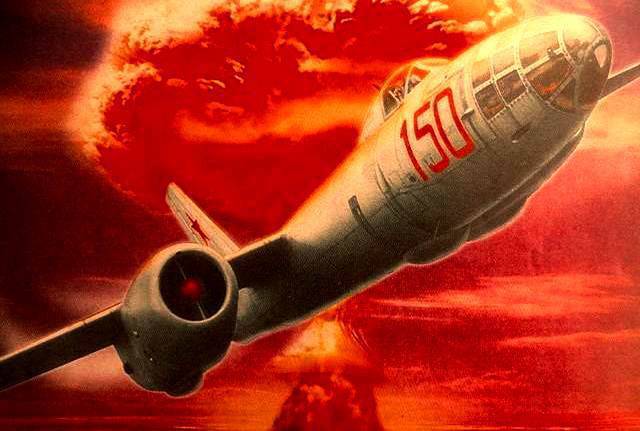
The reliability of the bomber and its strength have become truly legendary. In Chernyakhovsk there was a case when the “twenty-eighth”, after an emergency landing on the sea surface, was afloat for about two and a half hours, and then was towed by boats to the shore, repaired at the aerodrome, and then continued its service. The crew of a training IL-28 from Stryi got into a severe thunderstorm at a height of about 6000 m. The car was pretty patty, but the plane made a safe landing at its aerodrome. When viewed from a car, several holes were found from lightning strikes, paint, and in some places ground to metal, was hacked away over the entire surface of the front edges of the wing, stabilizer and keel.
It is worth noting the unique survivability of engines with durable and unpretentious centrifugal compressor. Flying at extremely low altitudes on the IL-28 was carried out quite often, therefore, hitting birds in air intakes, as well as branches from treetops, was common. However, VK-1 almost always successfully “digested” such “gifts”.
The training of bomber crews during the Soviet era was very intensive. Day and night, flight testing was carried out in simple and complex meteorological conditions. Special attention in the training was given to the development of methods and the improvement of combat tactics. Achieved high sletannosti in groups. The pilots flew in tight combat formations. The standards established the distance between the machines in the link no more than 40 m. With the growth of experience in the regiments, a wedge of several aircraft (from 3 to 9) began to be practiced simultaneously from ground strips. Crews were prepared for action from field airfields. Global long-term raids were not rare, for example, bombers of the 63 th AD of the Carpathian Military District, flew to Central Asian airfields in Marakh and Karshi.
During the transfer, the vehicles were serviced by their flight crews on aviation bases of the same type of bombers, in the same place at unfamiliar training grounds were conducted exercises.
An important role in the training was given to flights with the development of overcoming the boundaries of ground-based air defense systems and repelling enemy fighter attacks. The latter used the MiG-15 and MiG-17. As a result of the training of air battles, it was found that it was extremely difficult for a fighter with only cannon weapons to cope with the IL-28. When carrying out attacks from the front hemisphere zone, a high approach speed with a sufficiently small aimed fire range, taking into account the need to avoid being hit by stationary HP-23, didn’t leave fighters any chance of success. When attacking from the rear hemisphere of the Il-28, using its excellent speed and maneuverability characteristics, as well as a highly efficient aft defensive installation, it retained its status of “tough nut”. It should be noted that in such conditions, the American “Sabra”, armed only with large-caliber machine guns, would have even less chances for a successful attack than our MiGs.
And even with the advent of supersonic MiG-19 fighters, the situation has not changed radically. The increase in the speed of the fighter aircraft, to an even greater extent, reduced the time of aiming. In addition, the Ilyushin pilots used braking very effectively, which further reduced the time for an attack on catch-up courses. The situation changed somewhat only after the appearance in the troops of the MiG-19PM, which had a radar sight and four RS-2US missiles.
In Western countries, the development of fighter aircraft proceeded in a similar way. Therefore, even in the late fifties, when there were already a sufficient number of such machines as the F-100, F-105 and J-35 "Drakens" in Europe, our crews on the IL-28 had enough opportunities to escape from supersonic fighters, especially with using extremely small heights.
Aviation divisions with bombers capable of carrying atomic bombs deployed in western directions, looked to Europe as one of the incarnations unfolded in the minds of the inhabitants, the "Soviet threat." And it must be admitted that the fears were valid. "Twenty-eighths" had every chance to deliver a deadly cargo where it is required. Crews of carriers of nuclear ammunition were selected from the best and prepared with special care. For each crew, “personal” targets were defined, in the form of a nuclear stockpile. weapons, military bases and other strategic facilities.
To ensure one “nuclear” IL-28, a group of cover aircraft and EW was involved. This is how the group aimed at objects in Germany should have acted. Over the territory of the Soviet Union, aircraft gained altitude of the order of 10000 m, which gave the necessary fuel economy for long-haul flights. Above socialist Poland, at the exit to the first line of NATO radar systems, the group, hiding behind interference, "dived" under the zone of action of the most powerful radar, which was located in West Berlin. At that moment, some of the machines carried out distracting maneuvers and went off to the side. The next air defense lines were similarly passed, which provided an opportunity to overcome numerous zones covered by the Khok, Nike Hercules, Nike Ajax air defense systems. After a series of descents of Il-28, with “special equipment” on board, it turned out to be low altitude and already alone went to the main goal. Before it, a “jump” was made to a height of 1000 m, the accuracy of the exit to the object of impact was checked, followed by the dropping of bombs, and leaving with a decline towards the Soviet Union.
However, even if the plane remained intact, he had practically no chance of returning home. Given the maneuvering to overcome the air defense zones, fuel was only enough in one direction. The creation of the necessary airfields in Poland and the GDR later resolved this problem. And even later, when our IL-28 began to be placed on the airfields of these countries, their radius of action allowed us to reach the English shores.
Separately, it should be said about the participation of IL-28 in the Caribbean crisis. 28 September 1962, the American reconnaissance aircraft photographed on the deck of the ship, going to Cuba, disassembled "twenty-eighths". Later, these 42 IL-28s were discovered at airfields in the western and southern parts of the island, just 90 miles from Florida. In the Soviet operation "Mongoose" conducted by the bombers, a secondary role was assigned, the main batch was played by ballistic missiles. And yet, the IL-28 were on the list of offensive weapons that were capable of delivering a nuclear strike on US territory. Fortunately, the crisis was resolved peacefully, and the bombers with missiles returned to their homeland.
It would seem that such a successful and necessary car should have had a long and glorious life. However, in the early sixties, the country's leadership, and first of all N.S. Khrushchev, the opinion was confirmed that manned front-line aviation with the development of nuclear missile forces has lost its significance. A massive reduction of front-line bomber aviation regiments began, mine and torpedo formations were completely disbanded. The aircraft that had flown less than 100 hours were senselessly destroyed. The process was put on stream. For example, torpedo bombers cut in three shifts, what they did not have time to cut, they crushed tanks. Pacific only navy About 400 vehicles were destroyed. It was a complete defeat of the Russian front-line bomber aviation, the ruthlessness and senselessness of which could be surpassed only in the 80-90s.
Several brighten the picture could the fact that the leadership of the Air Force was not enthusiastic for such vandalism. Quite a lot of IL-28 converted into flying targets. A considerable amount managed to be saved - having preserved on open parking. In addition, many combat and training vehicles were sent to flight schools, where they survived until the mid-eighties and the new trends of Gorbachev's perestroika.
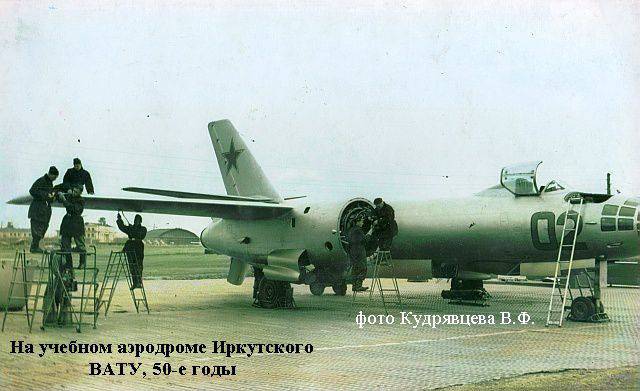
In addition to the USSR, the Il-28 aircraft were in service with the Air Force and Navy of Algeria, Afghanistan, Bulgaria, Hungary, Vietnam, GDR, Egypt, Indonesia, Iraq, Yemen, China, DPRK, Morocco, Nigeria, Poland, Romania, Syria, Somalia, Finland, Czechoslovakia. The aircraft were built serially in the People's Republic of China and in Czechoslovakia. In the countries of the Middle East and Africa Il-28 took part in the hostilities, where they confirmed the reputation of a reliable, tenacious and unpretentious machine. But this topic deserves a separate article.
For the training of combat pilots and cadets in the 1950, the Design Bureau created an IL-28U training variant. This modification was different from the base of the nose of the fuselage. Instead of the navigator’s cabin, an instructor pilot’s place was equipped, equipped with the equipment necessary for independent control of the machine and control of the student’s actions. IL-28U did not have weapons.
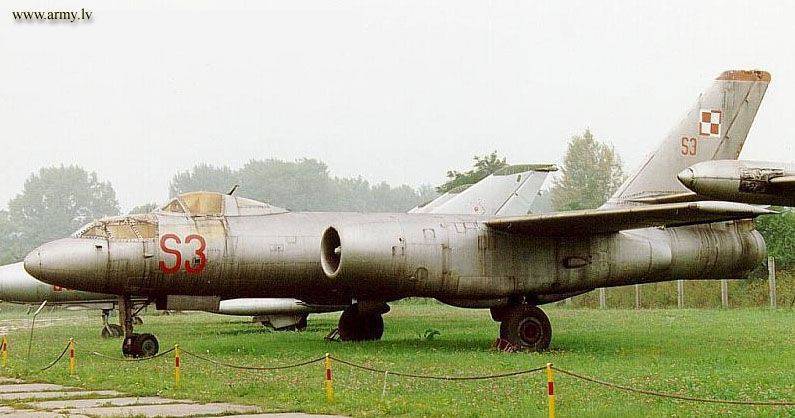
In mid-April, 1950, the scout IL-28Р took off. It was intended for conducting air tactical and operational intelligence. This option was equipped with a variety of equipment for conducting photointelligence. The equipment was mounted in the bomb bay, as well as a special photo cell, located in the tail section. Camera containers had an air heating system. In connection with the installation of photographic equipment on the aircraft and the LAS-3, some changes were made to the fuel system: the third tank was removed, and an additional tank was installed in the bomb bay, with a capacity of 750 l. Due to the production of two outboard fuel tanks for 950 l each, the range of the reconnaissance flight increased. The size of the wheels of its main supports was also increased in accordance with the take-off weight of the aircraft increased to 22760 kg. Due to a change in centering and an increase in wheel diameter by 110 mm, the nacelle was completely reworked. To increase the maneuverability on ground airfields, this engine nacelle was used on all types of IL-28 aircraft of the later series. Later, on the basis of the IL-28P, electronic reconnaissance aircraft were created, which received special radio equipment instead of airborne cameras.
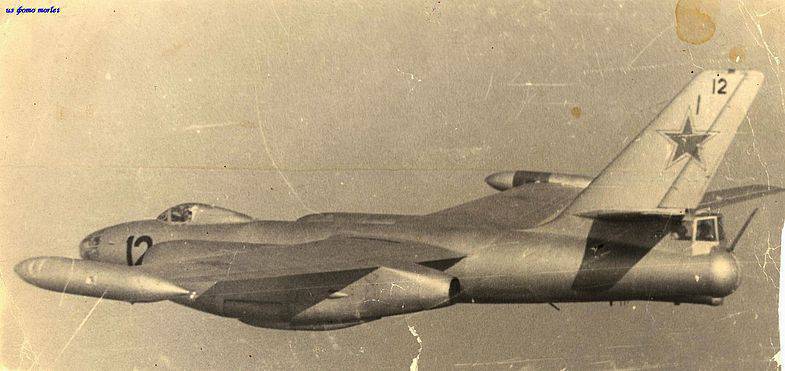
At the beginning of 1951, the IL-28T torpedo bomber with a 4270 mm bomb-compartment length was tested. A month later, they built a second copy, which was designed for suspension of a pair of torpedoes TWO. Due to the increase in the length of the bomb compartment on the 2,4, the capacity of fuselage fuel tanks has decreased by 2230 liters. To preserve the flight range, console suspended tanks were used with a total volume of 1900 l. In the cargo compartment of the torpedo brigade, there was a pair of 45-36 MAH high-altitude torpedoes and one 45-36 MAN for low-altitude dumping (instead of 45-36, the suspension of the reactive PAT-52 was allowed). The AMD-500, AMD-1000, Lyra, Desna and other mines could also be used. The torpedo bomber was tested, but did not go into the series due to the prolonged refinement of the torpedoes 45-36 MAN.
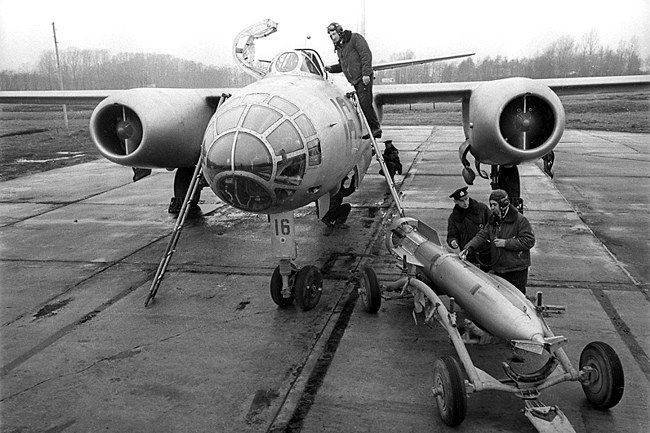
But the fleet did not remain without torpedo bombers. From the summer of 1951, serial bombers converted into torpedo bombers began to enter the regiments of naval aviation, from which it was possible to use the jet-powered torpedoes PAT-52. The torpedo was dropped from a height of 1500 m (almost no different from bombing) at a distance to the target 550-600 m. Considering that the probability of hitting one torpedo PAT-52 on the target was quite low, it was decided to increase the number of torpedoes on the IL-28Т.
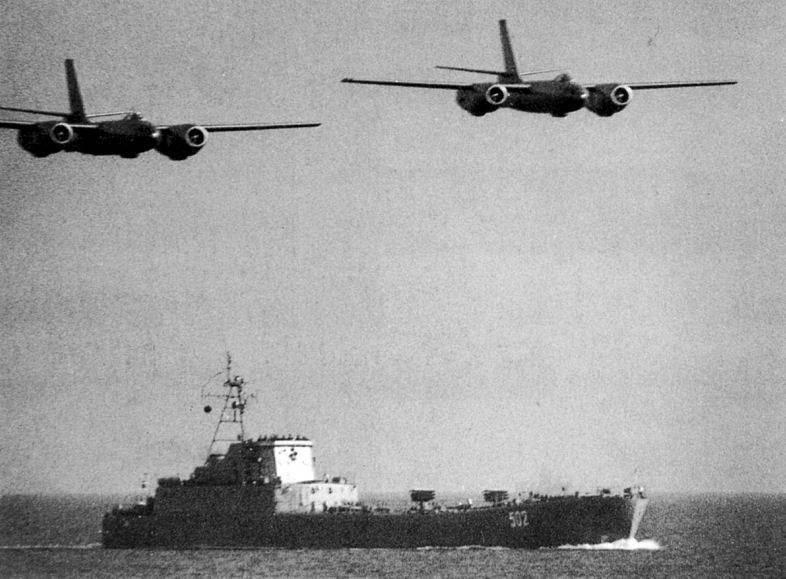
For this purpose, pylons with two girder holders of DB-4 were installed on the sides of the fuselage. With them, the Il-28T could carry three torpedoes PAT-52 and two torpedoes 45-56 NT. Exterior holders also allowed for min. Tests have proven the possibility of using PAT-52 from altitudes from 1500 m to 8400 m at instrument speeds up to 500 km / h. At high altitudes, there were no speed limits. In parallel, SRI-15 tested modernized PAT-52, the use of which was allowed at heights from 1500 m without restrictions on the maximum speed of the carrier. Low-altitude 45-36 MAN allowed use from heights 100-230 m and at up to 600 km / h. These torpedoes could be successfully used only at air temperatures above zero. At subzero temperatures, a number of their aggregates and mechanisms were frozen and could not function. Torpedo test ended in 1955 year. It was supposed to convert part of the naval aviation bombers into torpedo bombers, but this decision was soon abandoned. Since the second half of the 1950s, the torpedo variants of the Il-28 did not meet the fleet requirements, therefore in 1956 it was decided to rearm the mine-torpedo air regiments on the Tu-16.
With the advent of tactical nuclear weapons in the arsenal of the Soviet Union, part of the bombers was modified to deliver them. Refinement of the IL-28 bomber was to equip the bomb bay with the necessary heating system, to install on board the necessary equipment and light-protective shutters on the glazing of the crew cabs. Other design of the base aircraft remained unchanged.
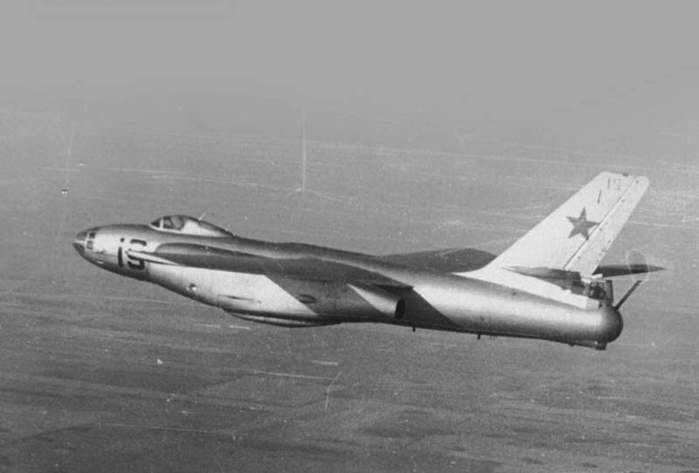
Work was carried out on the transformation of the IL-28 in the attack aircraft. In 1952, one Il-28 was equipped with underwing devices for launching TPC-190 turbo-jets. Another vehicle received the ARS-212 missiles for service. Both aircraft passed factory tests and were transferred to the Air Force Institute, where they showed good results. But it was noted that the strong thermal and dynamic effects of gas jets of rockets on the aircraft design. That is what prevented the transfer of cars to the series. However, the low combat load of the MiG-15, which at that time was our main fighter-bombers, forced the military to return to the idea of an assault variant based on IL-28. As a result, it was decided to convert part of the surviving bombers into Il-28Sh attack aircraft, equipping these vehicles with two artillery batteries in the bow (instead of the navigator’s cabin) and bomb bay, and placing pylons for bombing missile weapons under the wing of the 12.
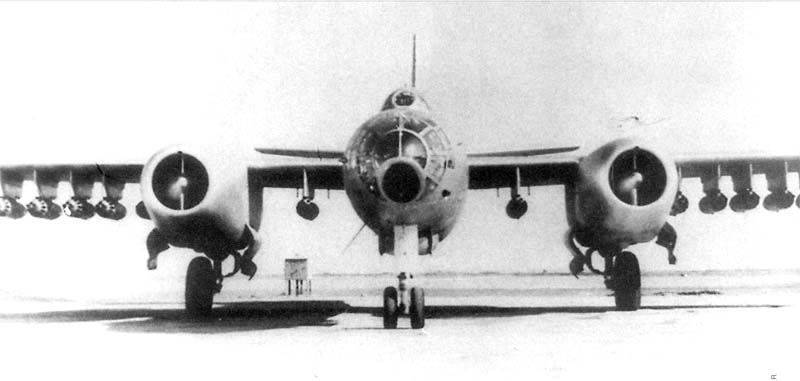
In the spring of 1967, TTTs were compiled, according to which the Il-28 aircraft, with underwing pylons installed for the suspension of various weapons, had to have the same depth of combat as the Su-7 fighter-bomber, but to surpass the latter by the number of combat funds in 2-3 times. The plane was supposed to work at low and ultra-low altitudes. To exclude the destruction of the aircraft with its own large-caliber bombs, the latter were equipped with special braking devices.
State tests of this aircraft, sometimes referred to as the Il-28, began in the fall of the 1967 year. Testers praised the characteristics of the machine and recommended the aircraft in the series. The advantage of this attack aircraft was an excellent overview of the cabs, as well as the possibility of combat operation from unpaved airfields. The IL-28Sh speed at low altitudes was limited to 660 km / h, which by the way corresponds to the speed of the American attack aircraft A-10. The fuel consumption on the ground increased by 30-50%, this reduced the range with a full combat load to 295 km. For example: the same indicator for the Su-25 is 300 km.
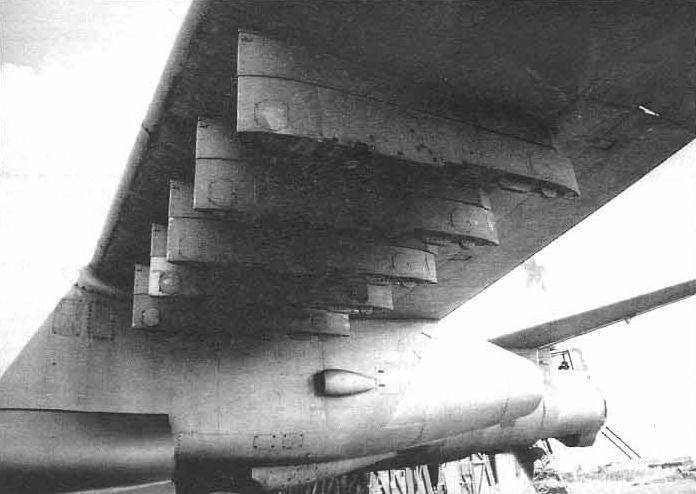
The preparation of the IL-28Sh for a sortie was less than 4 hours. However, according to the leadership of the Air Force, the attack aircraft had insufficient body armor protection of the crew and vital systems (in the Soviet Union traditionally this factor was given more attention than in the United States and England). It was also noted that the standard rescue equipment is not able to provide emergency escape of the machine at extremely low altitudes, where the plane was supposed to work. As a result, it was recognized that the Il-28Sh did not fully meet the requirements of the attack aircraft, and work on this version of the aircraft was discontinued. For conversion into attack aircraft they prepared up to 70 units of Il-28 bomber remaining in the ranks. But in fact, at the aircraft repair factories only a few copies were converted. It is reliably known that one of them was tested in the Lipetsk pulp and paper industry, and the latter, of undoubted interest for museums in Russia, found its inglorious end at the back of the Berdsk aerodrome at the end of the 90-s (the scrap metal fever period).
IL-28 actively used in the role of flying laboratories. One of the machines was used for flight research of in-flight refueling systems. And at the IL-28Р flying laboratory, the LRE RU-013 was tested. The IL-28 bomber was used to test new types of ammunition. Thus, in the 748 Guards Bomber Regiment (Mokray airfield, Zaporizhia), one aviation squadron in 1959 mastered the use of guided bombs UB-2F.
At the end of the forties and the beginning of the fifties, on the basis of German research in the USSR, the jet-propelled naval torpedo PAMT-1400 Pike was created. The developers have proposed two versions of the missiles: RAMT-1400-A with a radio command control system and RAMT-1400B with a radar guidance head. After launches from the Tu-2 aircraft, the cruise missile was modified for use with the Il-28 bomber. According to the results of 14 launches, which took place in the fall of 1952 with IL-28, it was concluded that the probability of hitting an enemy ship, depending on the distance to the target, is from 0.51 to 0,57. The firing range (RAMT-1400-A) was no more than 30 km. In 1954, the Shchuk-A batch was manufactured for military trials. For this purpose, they planned to convert the Il-12 aircraft into the 28 missile carriers. In fact, “Pikes” equipped only 2 machines.
In the 1952, the development of the Sokol radar, designed for launching new interceptors, was required to work it out on an existing aircraft. The most suitable was IL-28. To this end, it was completely reworked and strengthened the nose, which placed the radar and the operator. The test program ended successfully at the end of 1952.
In 1955, the OKB Lavochkin began designing an anti-aircraft missile “400”, designed to provide air defense of strategic facilities. The air defense system was supposed to hit air targets that had an effective dispersion surface (EPR) close to that of the Elah. In order to work out the missile sighting systems, it was decided to create an unmanned flying vehicle — a target — on the basis of the IL-28. Thanks to the excellent stability characteristics, the twenty-eighth unmanned version, which had stable flight characteristics, was created in the shortest possible time.
At the specially converted IL-28, various studies were carried out to fine-tune the complex of necessary equipment and special equipment for the first manned space flight. Namely, the IL-28 conducted flight tests and worked out the ejection device and other systems to save the cosmonaut from the Vostok spacecraft.
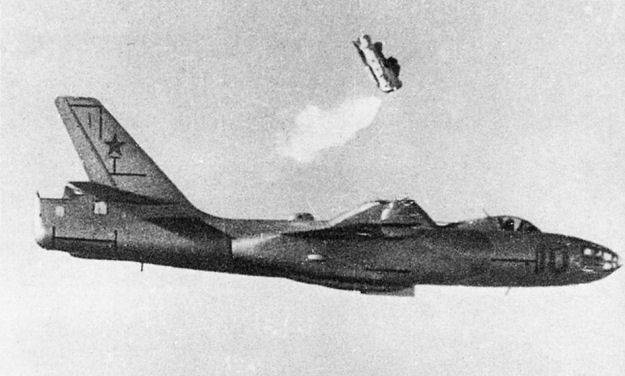
Part of the IL-28 was converted for the needs of the civil air fleet. On these aircraft dismantled weapons and sighting equipment. The machines were named IL-20 or IL-28P.
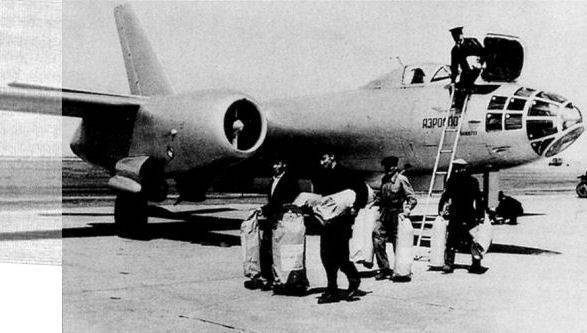
Continuing work on the development of the Il-28, the Ilyushin Design Bureau developed a version equipped with new VK-5 engines and an arrow-shaped wing. The modification was named IL-28C. However, during the design it turned out that the new machine has no special tactical flight advantages over the IL-28 serial bomber, and this work was discontinued.
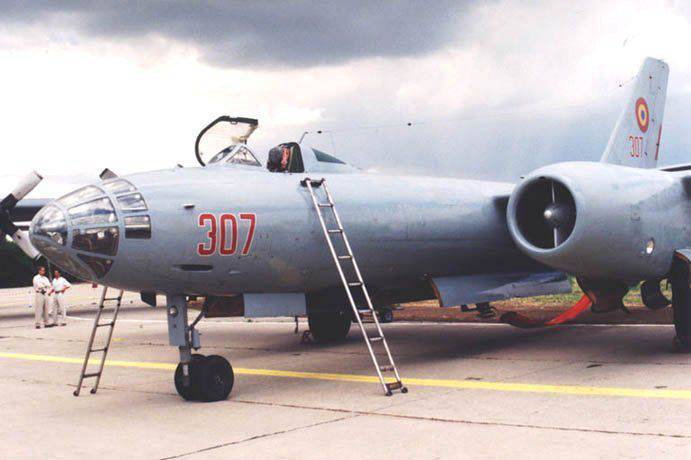
Sources:
Sergeev Y. Classic front-line aviation. IL-28 recognized as the best front-line bomber. // Wings of the Motherland. 1999. No. 4. C. 10-14.
Egorov Y., Kotlobovsky V. A good plane, which was not lucky // Aviation and Time. 1997. No. 1. C.2-12
Mekerdichan L., Pelekh A. The IL-28 front-line bomber. Zaporozhye: “Wild Field”, 2004. C. 5-17.
Yakubovich N.V. Il-28 bomber. Part of 1. // Aviacollection. 2006. No. 5. C. 3-15, 18-23, 31.
Yakubov Yakubovich N.V. Il-28 bomber. Part of 2. // Aviacollection. 2006. No. 6. C. 14-15,18-25.
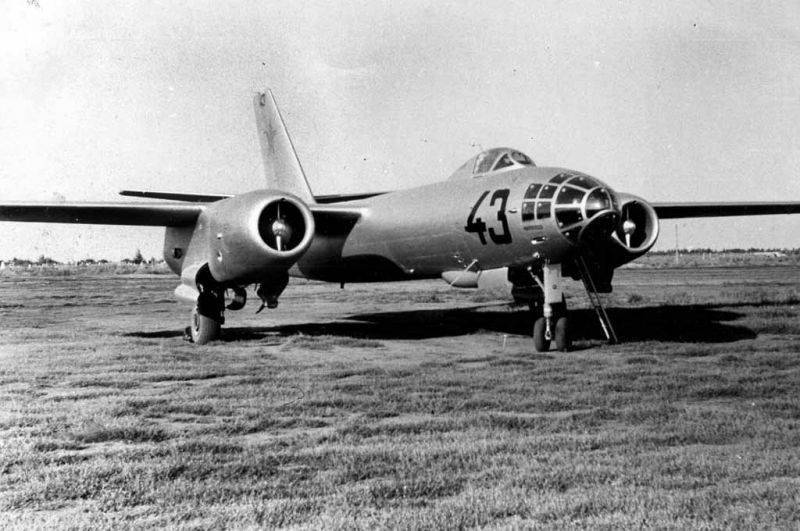
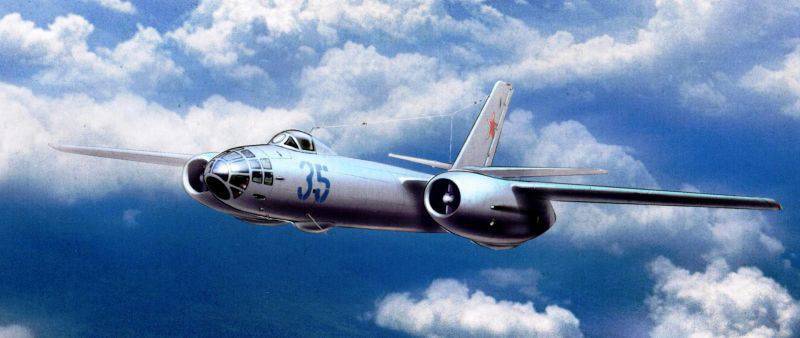
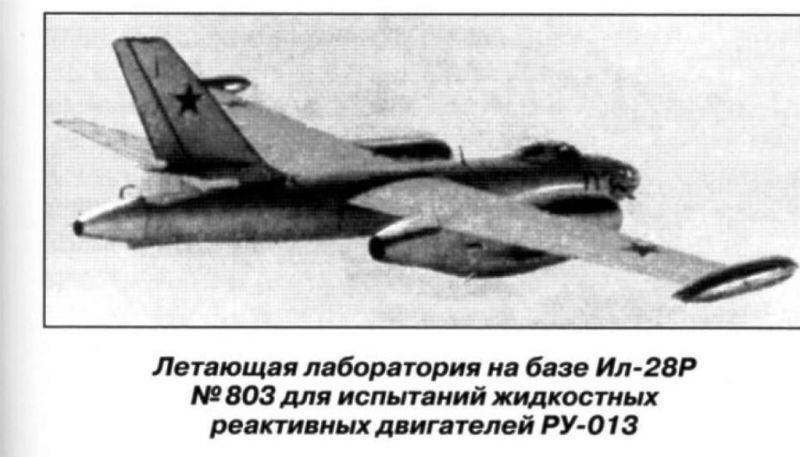
Information